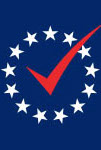Date Published: 2008-11-30
Author(s):
Ted Selker, Massachusetts Institute of TechnologyAbstract:
Across the United States, I have personally watched hundreds of precincts vote since 2001. Most recently, I traveled to Reno/Sparks, Nevada to observe the rollout of the Sequoia Direct record electronic voting systems with verifiable paper trail printers on September 7, 2004. This experience was also enriched by the members of the Secretary of State of California’s poll-watching effort, who invited me to join them to watch the election progress at eleven different polling places, which together represent almost forty different precincts. At each polling place I conducted interviews with poll workers and election officials as well as exit polls of voters. The California team, comprised of election officials from all over the state, who’s broad experience provided helpful context and insights.
What I witnessed at the election both encouraged and horrified me. The paper “receipts” were less confusing than I feared they would be. Poll workers and voters alike showed an eagerness to “get it right,” even when the new technology required them to endure some amount of initial frustration. However, things went gravely wrong when workers did not have adequate time to set up or test equipment; when, in the pressure of the moment, procedures were ignored or forgotten and, instead, solutions were improvised; or when no standard policy existed to guide election officials in proper protocol.
In my experience, such problems are not unique to that election, to the Sequoia electronic voting machines, or to the paper trail audit system. Indeed, the shortcomings I encountered in Nevada resemble those I have seen in precincts throughout the country and with every kind of voting system. Luckily, most of these problems can easily be solved if we focus on improving both training and process. We can learn from our mistakes. Toward that end, a detailed account of my day in Reno follows.
